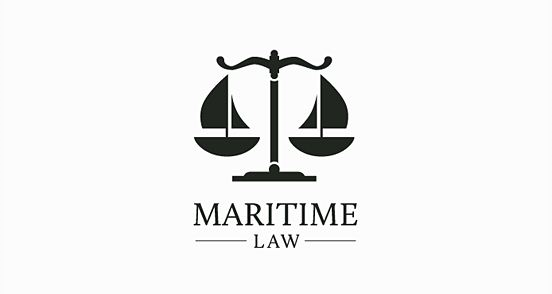
当前课程知识点:Finite Element Method (FEM) Analysis and Applications > 5、Principle of trial function method for solving mechanical equations of deformed body > 5.1Main method classification and trial function method for solving deformed body mechanics equation > Video 5.1
返回《Finite Element Method (FEM) Analysis and Applications》慕课在线视频课程列表
返回《Finite Element Method (FEM) Analysis and Applications》慕课在线视频列表
同学们好
首先回顾一下上一讲的主要内容
上一讲我们学习了平面问题的几种特殊情况的讨论
一维拉杆问题及平面纯弯梁的描述和求解
空间弹性问题的完整描述
以及关于张量的描述和理解
这一讲我们将学习
变形体也就是弹性体力学方程求解的
方法分类及试函数方法
平面纯弯梁求解的试函数方法
也就是残值处理法
如何降低对试函数的高阶导数和边界条件的要求
平面纯弯梁求解的虚功原理
平面纯弯梁求解的最小势能原理及变分基础
最后我们将学习一般弹性问题的能量原理
变形体特别是弹性变形体的
力学方程求解方法主要有两类
一类是主要针对原始方程进行求解
我们在第一讲中已经作了介绍
主要的方法有解析法、半解析法
还有差分法,还有其它的一些需要技巧的方法
第二类是间接针对原始方程进行求解
主要是进行误差的处理
这也是我们本章节要进行介绍的内容
主要的内容有加权残值法
虚功原理、最小势能原理
还有一些变分的方法
主要的特点是要设置满足边界条件的一些解
主要是试函数
当然试函数中间含有待定的系数
第二个要点就是将试函数代入原来的控制方程
由于是试函数,所以它不是精确解
所以一定有误差
所以说要研究怎么处理误差
通过处理误差来求出待定系数
那么我们针对这个变形体
特别是弹性的变形体
我们详细地来叙述一下
试函数方法的应用背景和基本原理
我们都知道复杂形状的变形体
首先几何形状Ω是非常复杂的
当然,Ω的边界我们叫偏Ω
它包含两个部分
一个是Su,一个是Sp
它也是非常复杂的
那么我们要获取变形体中间的一些力学参量
我们定义了三大类变量
当然三大类变量要通过三大类方程来进行求解
前面说的直接方法也就是直接
通过三大类方程来求解三大类变量
当Ω,也就是几何形状非常复杂的时候
要得到解析解往往是非常困难的
那么试函数方法往往不是直接求解
它通过首先满足一定边界的试函数
先设定一定的试函数
然后再代入控制方程中间来处理误差
这样的话就使得求解的难度大大降低
总的流程基本上是这样的
第一步是设定试函数
也就是含有待定系数,满足边界条件
第二步就是代入控制方程中使得误差最小
可以获得待定系数的一系列方程
那么常用的方法是加权残值法
加权残值法实际上就是对误差进行处理的方法
加权残值法有Galerkin加权残值法
还有残值最小二乘法
那么关于加权残值法的思路可以参见
知识点1.3的微分方程的求解方法
好,我们来具体介绍Galerkin方法
首先我们对这个问题的一般的题法作一个介绍
我们还是以简支梁受均布载荷的
这么一个平面梁的弯曲问题为例
我们要求得它的挠度
首先它有一个控制方程
还有两类边界条件
那么我们抽象地表达这个控制方程是
L()这是一个算子
这个算子是关于挠度的算子
它实际上是一个微分算子
那么加上一个力b一杠等于0
我们还有两类边界条件
我们叫gu,就是关于位移的边界条件
另外还有关于力的边界条件
那么我们把它具体化
对于我们这个平面梁的弯曲问题
那么控制方程我们前面已经推导过了
它是一个EI乘上一个
关于挠度的4阶导数的这么一个方程
边界条件BC(u)就是两边
也就是两个端点的挠度为0
就是说x=0的时候v=0
x=l的时候v=0
另外还是在两个端点上
力的边界条件就是弯矩为0
我们知道弯矩可以表达成挠度的两阶导数
所以说是两阶导数在x=0的地方要等于0
同样,在右端点两阶导数在x=l的地方也要等于0
那么在这个问题里面
算子L()实际是就是EI关于x的4阶导数
载荷b一横就是-px
那么试函数的几个要点
首先我们要设定满足所有边界条件
在我们这个问题里就是BC(u)和BC(p)
的试函数我们叫v(x)
我们给试函数有一个标记就是上面有一个三角
那么把这个试函数代到边界条件里面去
它是完整地满足
那么我们设定试函数主要是
用基底函数的方式进行设定
我们基底函数可以取一系列的
满足BC(u)和BC(p)的基底函数
我们把它进行线性组合
那么它的组合的系数
我们叫c1,c2一直到cn
那么这些系数我们叫待定系数
这个是需要求解的
我们把这个试函数代到控制方程中
也就是说L()这个算子
关于试函数的这么一个算子加上一个b一横
代进去以后,由于它是试函数,它不是精确解
所以说它一定是不等于0的
我们把代入控制方程以后的这个函数叫残值函数
注意这是残值函数,它不是一个值
对于这个梁的弯曲问题
它是关于0到l整个沿着这个梁的长度
它是一个分布,是一个函数
它是关于定义域上的分布函数
由于它是误差的分布函数
所以它有可能为正,也有可能为负
因此需要再定义出一个误差的指标
这个指标应该说是可以处理整个定义域内的
所有的误差的总和
当然刚刚提到了有正有负,那么怎么处理
如果正负抵消了,那么这个误差指标就体现不出来
所以说关于误差指标的定义,这也是一个关键
那么加权残值法具体实施起来有这么几类
一个就是Galerkin加权残值法
它的要点就是把试函数前面取的那些基底函数
也就是φ1,φ2一直到φn
把它作为一个权函数
这个权函数对于刚才所说的残值函数进行加权
在整个域里面进行积分
让它积分后等于0
由此来确定我们试函数中间的一些待定系数
残值最小二乘法主要是要定义一个误差的指标
我们叫Err
它就是把残值函数平方
刚才说了有正有负,平方以后就完全是正的
然后再加权以后对整个域进行积分
所谓积分就是把所有的误差累加起来
让这个累加起来以后的全域上的误差
我们定义的误差指标让它取最小
当然这个里面也有一个权函数
这个权函数一般可以取为1
另外还有一个是配点法
由于这个残值函数是在定义域里面是一个分布函数
配点法就是让这个残值函数
在我们规定的一些关键离散点上让它为0
由此来确定我们试函数中间的一些待定系数
这就是强迫残值函数在规定点上它的余量为0
通过它来求取待定系数
我们重点介绍一下Galerkin加权残值法
要点就是试函数我们取为一系列基底函数的线性组合
基底函数都是满足所有的边界条件
那么线性组合的那些系数是我们的待定系数
也就是说c1,c2一直到cn
那么残值函数就是把试函数代入到控制方程里面去
获得的这么一个函数
是在定义域里的一个分布函数
Galerkin加权残值法就是前面提到的
把针对残值函数前面乘上的这个权函数
也就是加权,取为本身的基底函数
那么你有多少项,我就取多少个
然后在整个域里面加权以后使得误差为0
那这样的话我们就获得一系列的方程
这个方程是关于待定系数
c1,c2一直到cn的线性方程组
通过求解这个方程组
来求出c1,c2一直到cn
残值最小二乘法也是
首先和Galerkin加权残值法一样
设定的试函数也是φ1,φ2一直到φn
然后通过c1,c2一直到cn,进行线性组合
那么同样也有一个残值函数R
定义一个误差的指标叫Err
这个Err刚才说到了
它是残差函数的平方再乘一个权函数,对整个域作积分
一般情况下可以把这个权函数Wt可以取为1
那么取极小值就是通过变化里面的c1,c2一直到cn
使得新定义的这个,我们叫误差指标Err,让它最小
所以说它的一阶导数
关于c1,c2一直到cn的偏导数都为0
同样也可以获得关于c1,c2一直到cn的线性方程组
这样的话也就求出c1,c2一直到cn
那么就可以得到我们所设定试函数的
基底函数基础上的真实的解
-Finite element, infinite capabilities
--Video
-1.1 Classification of mechanics:particle、rigid body、deformed body mechanics
--1.1 Test
-1.2 Main points for deformed body mechanics
--1.2 Test
-1.3 Methods to solve differential equation solving method
--1.3 Test
-1.4 Function approximation
--1.4 Test
-1.5 Function approximation defined on complex domains
--1.5 Test
-1.6 The core of finite element: subdomain function approximation for complex domains
--1.6 Test
-1.7 History and software of FEM development
--1.7 Test
-Discussion
-Homework
-2.1 Principles of mechanic analysis of springs
--2.1 Test
-2.2 Comparison between spring element and bar element
--2.2 Test
-2.3 Coordinate transformation of bar element
--2.3 Test
-2.4 An example of a four-bar structure
--2.4 Test
-2.5 ANSYS case analysis of four-bar structure
--ANSYS
-Discussion
-3.1 Mechanical description and basic assumptions for deformed body
--3.1 Test
-3.2 Index notation
--3.2 Test
-3.3 Thoughts on three major variables and three major equations
--3.3 Test
-3.4 Test
-3.4 Construction of equilibrium Equation of Plane Problem
-3.5 Test
-3.5 Construction of strain-displacement relations for plane problems
-3.6 Test
-3.6 Construction of constitutive relations for plane problems
-3.7 Test
-3.7 Two kinds of boundary conditions
- Discussion
-- Discussion
-4.1 Test
-4.1 Discussion of several special cases
-4.2 Test
-4.2 A complete solution of a simple bar under uniaxial tension based on elastic mechanics
-4.3 Test
-4.3 The description and solution of plane beam under pure bending
-4.4 Test
-4.4 Complete description of 3D elastic problem
-4.5 Test
-4.5 Description and understanding of tensor
-Discussion
-5.1 Test
-5.1Main method classification and trial function method for solving deformed body mechanics equation
-5.2 Test
-5.2 Trial function method for solving pure bending beam: residual value method
-5.3 Test
-5.3How to reduce the order of the derivative of trial function
-5.4 Test
-5.4 The principle of virtual work for solving plane bending beam
-5.5 Test
-5.5 The variational basis of the principle of minimum potential energy for solving the plane bending
-5.6 Test
-5.6 The general energy principle of elastic problem
-Discussion
-6.1Test
-6.1 Classic method and finite element method based on trial function
-6.2 Test
-6.2 Natural discretization and approximated discretization in finite element method
-6.3 Test
-6.3 Basic steps in the finite element method
-6.4 Test
-6.4 Comparison of classic method and finite element method
-Discussion
-7.1 Test
-7.1 Construction and MATLAB programming of bar element in local coordinate system
-7.2 Test
-7.2 Construction and MATLAB programming of plane pure bending beam element in local coordinate syste
-7.3 Construction of three-dimensional beam element in local coordinate system
-7.4 Test
-7.4 Beam element coordinate transformation
-7.5 Test
-7.5 Treatment of distributed force
-7.6 Case Analysis and MATLAB programming of portal frame structure
-7.7 ANSYS case analysis of portal frame structure
-8.1 Test
-8.1 Two-dimensional 3-node triangular element and MATLAB programming
-8.2 Test
-8.2 Two-dimensional 4-node rectangular element and MATLAB programming
-8.3 Test
-8.3 Axisymmetric element
-8.4 Test
-8.4 Treatment of distributed force
-8.5 MATLAB programming of 2D plane rectangular thin plate
-8.6 Finite element GUI operation and command flow of a plane rectangular thin plate on ANSYS softwar
-Discussion
-9.1 Three-dimensional 4-node tetrahedral element and MATLAB programming
-9.2 Three-dimensional 8-node hexahedral element and MATLAB programming
-9.3 Principle of the isoparametric element
-9.4Test
-9.4Numerical integration
-9.5 MATLAB programming for typical 2D problems
-9.6 ANSYS analysis case of typical 3Dl problem
-Discussion
-10.1Test
-10.1Node number and storage bandwidth
-10.2Test
-10.2 Properties of shape function matrix and stiffness matrix
-10.3Test
-10.3 Treatment of boundary conditions and calculation of reaction forces
-10.4Test
-10.4 Requirements for construction and convergence of displacement function
-10.5Test
-10.5C0 element and C1 element
-10.6 Test
-10.6 Patch test of element
-10.7 Test
-10.7 Accuracy and property of numerical solutions of finite element analysis
-10.8Test
-10.8 Error and average processing of element stress calculation result
-10.9 Test
-10.9 Error control and the accuracy improving method of h method and p method
-Discussion
-11.1 Test
-11.1 1D high-order element
-11.2 Test
-11.2 2D high-order element
-11.3 Test
-11.3 3D high-order element
-11.4 Test
-11.4 Bending plate element based on thin plate theory
-11.5 Test
-11.5 Sub-structure and super-element
-12.1Test
-12.1 Finite element analysis for structural vibration: basic principle
-12.2 Test
-12.2 Case of finite element analysis for structural vibration
-12.3 Test
-12.3 Finite element analysis for elastic-plastic problems: basic principle
-12.4 Test
-12.4 Finite element analysis for elastic-plastic problems: solving non-linear equations
-Discussion
-13.1 Test
-13.1 Finite element analysis for heat transfer: basic principle
-13.2 Test
-13.2 Case of finite element analysis for heat transfer
-13.3 Test
-13.3 Finite element analysis for thermal stress problems: basic principle
-13.4 Test
-13.4 Finite element analysis for thermal stress problems: solving non-linear equation
-Discussion
-2D problem: finite element analysis of a 2D perforated plate
-3D problem: meshing control of a flower-shaped chuck
-Modal analysis of vibration: Modal analysis of a cable-stayed bridge
-Elastic-plastic analysis: elastic-plastic analysis of a thick-walled cylinder under internal pressur
-Heat transfer analysis: transient problem of temperature field during steel cylinder cooling process
-Thermal stress analysis: temperature and assembly stress analysis of truss structure
-Probability of structure: Probabilistic design analysis of large hydraulic press frame
-Modeling and application of methods: Modeling and analysis of p-type elements for plane problem


